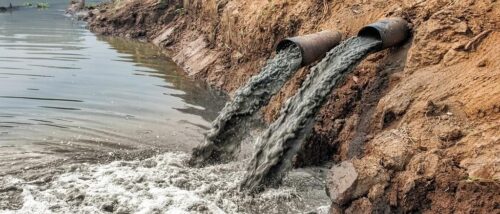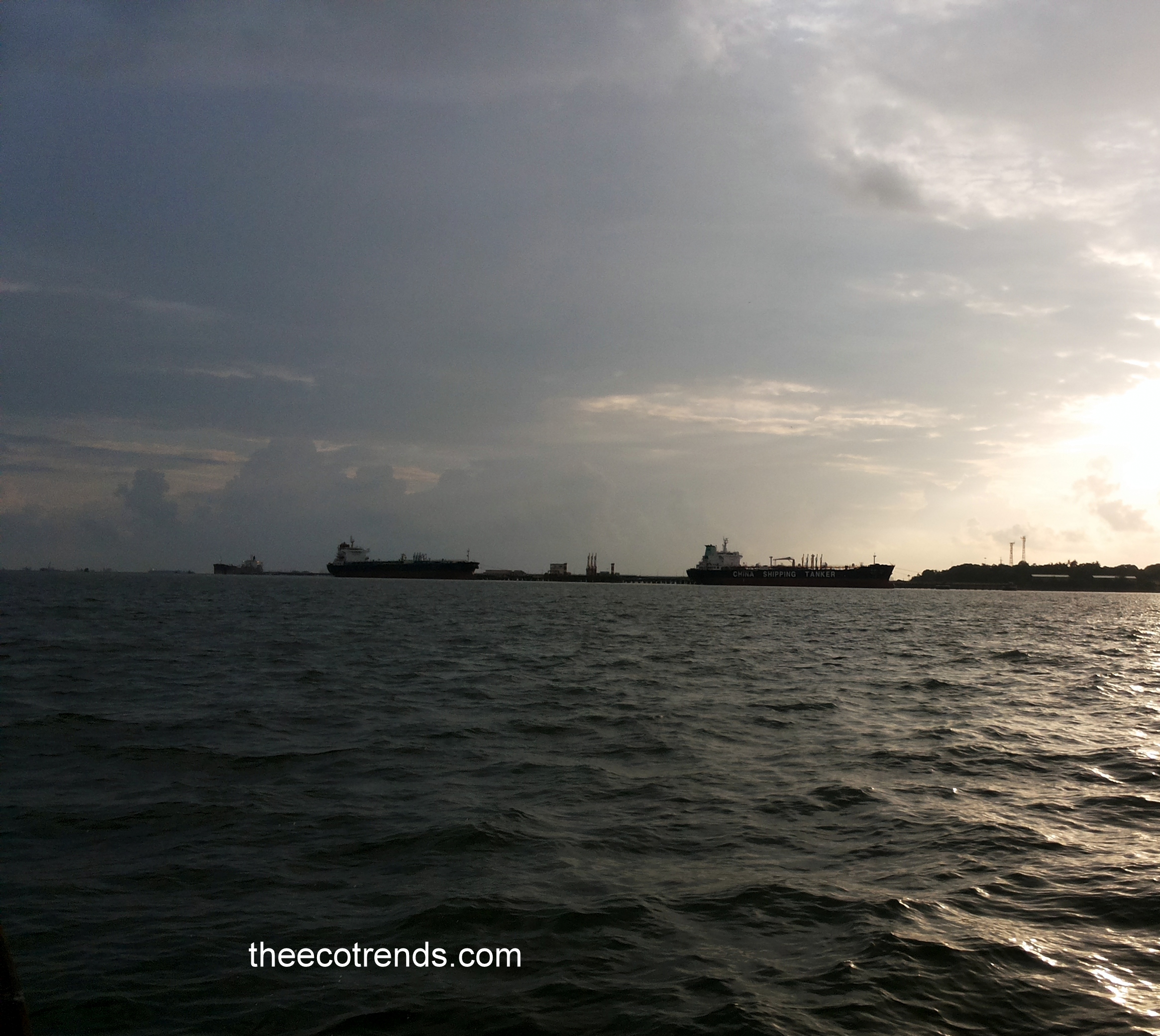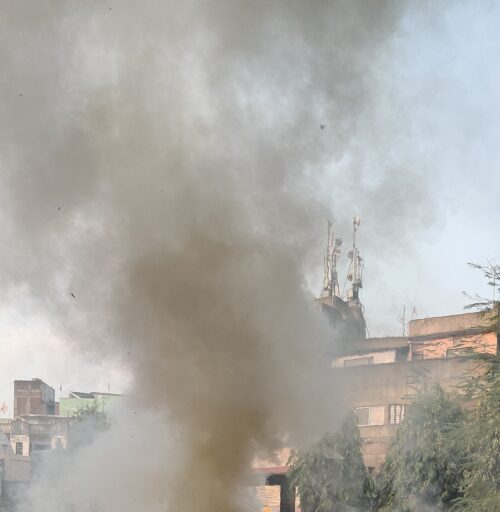•Principles and Guidelines
Following principles and guidelines have been accepted for the control of different types of Industrial pollutions-
A. Prevention of entry into the environment: According to this principle, pollutants are checked at the point of their origin and are not allowed to enter into the environment by the application of specific devices.
B. Isolation: By isolation, we mean putting out or segregating pollutants at the point of their release or production. Such isolated pollutants should then be dumped at specific locations as per scientific guidelines adopted by pollution control agencies. Some of these pollutants can be recycled and reused for example reuse of fly-ash for making bricks.
C. Conversion from highly toxic to lesser harmful product: We cannot stop industrial processes simply because they cause pollutions. However, we can reduce the toxicity or harmfulness of pollutants by applying bio- chemical technologies. A number of catalysts are introduced to reduce the toxicity of chemical pollutants produced during industrial processes.
D. Alternatives: These are safer substances used on the place of substances that cause hazards. For example, bio- pesticides like oil of Neem and extract of garlic, are better alternatives to synthetic chemical pesticides.
E. Destruction: The chemical pollutants that are proved to be toxic, and are difficult to be substituted by safer ones- need to be blocked from further release and then destroyed in a safe and prescribed scientific manner. Advanced and Environment Friendly Incineration Technology is a good option for reduction of pollution through destruction.
F. Awareness: Matters pertaining to good citizenship, environmental consciousness and preventive methods must be explained to the common man, so that he may try to perform his duties with a high degree of civic sense. These awareness programmes can be conducted through different media like radios, TVs. seminars, demonstrations, documentary films, pamphlets, display of hoardings, banners and plays like street theatres or nukkar nataks etc.
G. Public Participation: The word ‘public participation’ means ‘sharing in common’ or ‘doing together’. In environmental context, it means, the involvement of the local public in solving their local environmental problems. It does not mean, people working under the planning and decisions of government agencies- it is rather bottom up approach. With joint efforts, people identify their problems, make plans to resolve them and then to implement them.
H. Environmental Education: Environmental Education has been made a compulsory subject for studies at schools, colleges and other institutions. This is the most effective tool for the control of pollution and conservation of environment on grass- root level.
I. Self-Restraint – A Habit: The greed of luxury and comfort initiates the production of newer and newer products. More and more products carry more and more wastes in different forms like wrapping materials, plastic carry bags, chemical preservatives (in cases of food materials) etc.
When these products are used up, their wrappings and other associated and useless materials coming to the homes of consumers are thrown out carelessly. These thrown out materials create the problem of pollution.
Overuse of materials that are not important for our health and development impose burden on the family budget. These are the reasons why our thinkers and philosophers preached on self-restraint. Thus, it is important now that conservation should be made a habit.
J. Support to Professional Conservation Groups: The state and central governments should provide subsidies for conservation of environment and pollution control works being carried out by professional groups.
K. Legislative and Tax Measures: The existing laws for pollution control should be enforced properly so as to abate pollution. Industries doing eco-friendly works like recycling of wastes, regeneration of forest and production of pollution free technologies should receive tax –concession from the government.
Any big problem cannot be solved without planning and strong efforts. The pollution of environment is certainly a big problem. So, planning for its control is very necessary.
•Costs and Policy Incentives
Every Industry has the policy of cheaper production so as to get through the market-competition and to attract customers. For this the industry tries to keep the cost of production at lower level.
Installation of pollution control devices puts additional cost in terms of purchase of pollution control machinery, and consumption of extra energy in driving that machinery. In this the cost of the product will remain higher which is neither liked by consumers nor by industrialists. So, the industry keeps on polluting the environment and the consumer has to bear the cost of pollution in terms of ill health.
It is important to note here that not all the sufferers of pollution are consumers. On the other hand, the sufferers of pollution may be far away from the industry, say in some other country and they have nothing to do with the polluting industry.
Under government policies, the polluter is forced to pay the cost of pollution (the Polluter Pay – Principle). The industry in this case raises the cost of the product. Thus, the cost in terms of ill health that was borne by common public is automatically transferred to consumers. This may be a novel policy in the area of atmospheric pollution by an industry.
Pollution especially the industrial pollution which is linked to the economic growth of industry is damaging the global environment. It is causing risks to community health together with putting economic burden on innocent public.
The greater impacts of industrial pollution like global warming, climate change, Acid rains, ozone depletion etc. are life threatening. As such industrial developments at the risk of community health and threats to lives across the globe are unacceptable. Thus, it is the urgency to control pollution at whatever cost it is possible.
•Combating Global Warming
Human activities of pollution are modifying the natural process of greenhouse effect. The advent of the Industrial Revolution in the 1700s boosted up the activities of burning of fossil fuels like coal, oil and natural gas which released lots of heat absorbing gases into the atmosphere. Clearing of land for agriculture or for urban settlements, wiped out the vegetation that acted as ecological sink for some of those gases like carbon dioxide.
The heat absorbing gases accumulate in high concentrations in the upper atmosphere around the earth extending up to 100 km above its surface and act as glass panels of a green house. They allow much of the short-wave solar radiation to reach to the earth surface but stop much of the long wave infrared rays against escaping out as heat. They absorb these infrared radiations and then re-radiate most of them back to the earth surface.
Thus, the temperature of the atmosphere rises gradually causing an unnatural heating effect which is called as the Global Warming. Global warming is the enhanced greenhouse effect due to greater accumulation of GHGs in the upper atmosphere.
The Global Warming can be prevented and controlled by following important measures-
1. Reduction on the consumption of fossil fuels by depending on non- conventional renewable sources of energy like wind, sunlight, nuclear and bio- energy.
2. Checking the GHGs at the source of their production and disposing them elsewhere.
3. Collection or recovery of GHGs already present in the atmosphere and their disposal.
4. Learning to adopt and accept the changes in the climate.
5. International co-operation for reduction of GHGs emission with full majority.
Feature Image : down to earth




